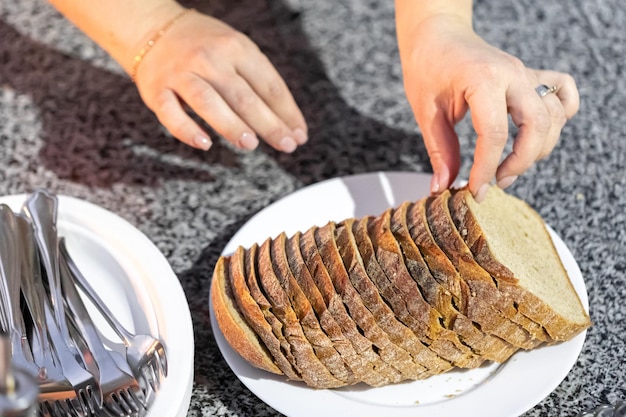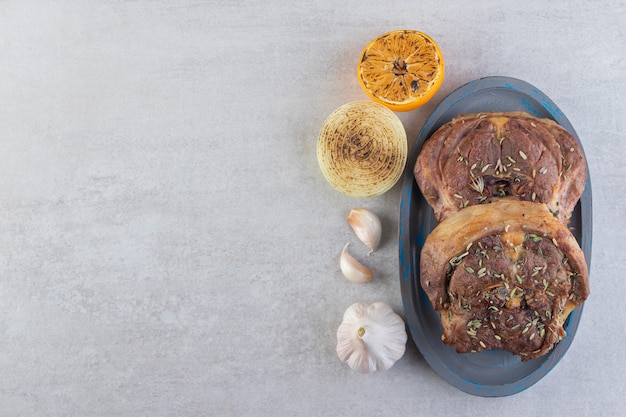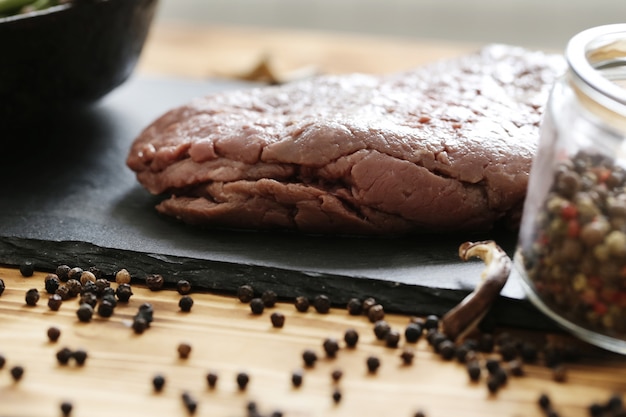Let's be honest, who doesn't love a good meatloaf? It's a dish that brings back memories of home-cooked meals, hearty comfort, and family gatherings. But getting that perfect meatloaf – juicy, flavorful, and cooked just right – can sometimes feel like a culinary mystery. You've got to be careful, because overcook it and it'll be drier than a desert, undercook it and you're playing with fire (and food poisoning).
So, buckle up, because I'm going to share my tried-and-true tips for nailing your meatloaf every time. I've been tackling this culinary classic for years, and I've learned a thing or two along the way. Let's dive into the fascinating world of meatloaf, shall we?
(Part 1) Factors Influencing meatloaf cooking Time

Before we jump into specific cooking times, we need to understand what influences how long your meatloaf spends in the oven. Think of it as a culinary puzzle, where each ingredient and element plays a role.
1.1 meatloaf size and Shape
Here's the first rule of thumb: bigger meatloaf, longer baking time. It's like trying to cook a giant loaf of bread – you wouldn't expect a tiny bread roll to take the same amount of time as a massive sourdough, right? The same goes for meatloaf.
But it's not just about size, shape matters too. Imagine a round meatloaf versus a flat, oblong one. The round one has less surface area exposed to the heat, so it'll cook a bit faster.
1.2 meatloaf ingredients
This is where things get interesting! The ingredients you choose for your meatloaf can significantly affect how long it needs to cook.
Moist Ingredients: A meatloaf packed with moist ingredients like breadcrumbs, milk, and chopped vegetables will take longer to cook because it holds onto moisture. Think of it like a sponge - it takes longer to dry out.
Drier Ingredients: On the other hand, a meatloaf with more meat and fewer moist ingredients will cook faster because it loses moisture more quickly.
1.3 Oven Temperature: The Heat Factor
You know the drill: hotter temperature, faster cooking. But it's a delicate balance. High temperatures can lead to a tough, dry meatloaf. Lower temperatures take longer, but they can yield a more tender and juicy result. We'll explore this in more detail later on.
1.4 Oven Type: A Matter of Heat Distribution
You've got to be aware of your oven's quirks! Different ovens have different heat distributions. A convection oven, for instance, uses circulating hot air, which can cook your meatloaf faster than a traditional oven. It's like a turbo boost for your bake.
(Part 2) The Quest for Doneness: How to Know When Your Meatloaf is Ready

Nobody wants a raw meatloaf, right? But at the same time, you want to avoid that dry, overcooked nightmare. So, how do you know when your meatloaf is perfectly cooked?
2.1 The meat thermometer: Your Culinary Friend
The most reliable way to know if your meatloaf is done is with a meat thermometer. It's like a little detective in your kitchen, ensuring your meat is safe and cooked through. Aim for an internal temperature of 160°F (71°C).
2.2 Visual Clues: A Baker's Eye for Detail
If you don't have a meat thermometer, don't worry. Keep an eye out for these visual cues:
Color: A perfectly cooked meatloaf will have a nice, even brown color all over. If you see pink in the middle, it needs more time.
Texture: A firm texture is your friend. Gently press on the meatloaf. It should feel firm, but not rock hard. If it's still jiggly in the center, it needs a bit more oven time.
(Part 3) A General Guide to Meatloaf Cooking Times: Your Starting Point

Alright, let's talk numbers! Here's a general guide to meatloaf cooking times, but remember, it's just a starting point. Every oven and every meatloaf is a little bit unique.
3.1 Small Meatloaf (1-1.5 lbs)
Cooking Time: 45-60 minutes at 350°F (175°C)
Doneness Check: After 45 minutes, use a meat thermometer or look for those visual cues we talked about.
3.2 Medium Meatloaf (2-3 lbs)
Cooking Time: 1 hour - 1 hour 30 minutes at 350°F (175°C)
Doneness Check: After 1 hour, check for doneness.
3.3 Large Meatloaf (4-5 lbs)
Cooking Time: 1 hour 30 minutes - 2 hours at 350°F (175°C)
Doneness Check: After 1 hour 30 minutes, check for doneness.
(Part 4) Adjusting Cooking Time: Your Recipe Tweaks
Now, here's the thing: these times are just general guidelines. You might need to tweak them depending on the factors we discussed earlier.
4.1 Too Much Moisture: More Time to Bake
If you've used a lot of moist ingredients, like breadcrumbs, milk, or chopped veggies, you'll probably need to add 10-15 minutes to your cooking time. It needs extra time to dry out and reach that perfect doneness.
4.2 Too Little Moisture: A Quicker Cook
If your meatloaf is on the drier side, you might be able to shorten the cooking time a bit. Reduce it by 5-10 minutes and check for doneness.
4.3 Higher Oven Temperature: A Speedier Bake
If you're baking your meatloaf at a higher temperature, you'll need less cooking time. For every 25°F (14°C) increase in temperature, adjust your cooking time by 10-15 minutes.
4.4 Lower Oven Temperature: More Time in the Oven
If you're using a lower temperature, you'll need more time to bake. Add 10-15 minutes to your cooking time for every 25°F (14°C) decrease in temperature.
(Part 5) The Battle Against Dryness: Keeping Your Meatloaf Juicy
No one wants a dry, crumbly meatloaf! Here are some tips to ensure your meatloaf stays moist and flavorful.
5.1 Don't Overmix: A Gentle Hand
Overmixing your meatloaf mixture can toughen the meat, making it less juicy. Just mix it until the ingredients are well combined, no more!
5.2 Adding Moisture: The Power of Ingredients
Adding moist ingredients, like breadcrumbs, milk, or even a bit of chopped onion or apple, can help to keep your meatloaf moist. Think of it like adding a splash of water to a cake batter – it helps to create a tender texture.
5.3 Fat is Your Friend: The Secret to juicy meatloaf
A little bit of fat, like ground pork or bacon, can make a big difference. Fat helps to keep the meatloaf moist and flavorful.
5.4 Cover It Up: Foil to the Rescue
Covering the meatloaf with foil for the first part of the cooking time can help prevent it from drying out. It's like creating a little sauna in your oven, keeping the moisture in.
5.5 Glaze It Up: A Flavorful Finish
A glaze, made with ketchup, brown sugar, or mustard, can add moisture and flavour while giving your meatloaf a beautiful, glossy finish. It's a finishing touch that adds depth and dimension.
(Part 6) The Importance of Rest: Let Your Meatloaf Relax
Once your meatloaf is cooked to perfection, resist the urge to slice and serve immediately. Let it rest for 10-15 minutes before slicing and serving. This allows the juices to redistribute throughout the meatloaf, preventing it from falling apart when you cut it. It's a crucial step for a perfectly presented meatloaf.
(Part 7) meatloaf variations: Beyond the Classic
The beauty of meatloaf is its versatility. You can add all sorts of different ingredients and flavors to make it your own. Here are a few ideas to get your creative juices flowing:
7.1 classic meatloaf: The Timeless Favorite
This is the basic recipe that most people are familiar with. It's made with ground beef, breadcrumbs, milk, onion, and seasonings. Keep it simple or add your own signature touch!
7.2 Cheesy Meatloaf: A Melty Delight
Add some shredded cheese to your meatloaf mixture for a cheesy twist. It's a perfect way to add richness and flavor.
7.3 Veggie Meatloaf: A Healthier Twist
Mix in some chopped vegetables, like carrots, zucchini, or peppers, for a healthy and flavorful meatloaf. You're sneaking in those veggies without anyone noticing!
7.4 Italian Meatloaf: Flavors of Italy
Add Italian herbs and spices, like oregano, basil, and garlic, for a flavor that transports you straight to Italy. It's a vibrant and aromatic meatloaf.
7.5 Spicy Meatloaf: Heat It Up
If you like things hot, add some chili powder, cayenne pepper, or hot sauce to your meatloaf mixture. Get ready for a spicy kick!
(Part 8) cooking meatloaf Beyond the Oven: Alternative Methods
While the oven is the traditional way to cook meatloaf, you can also explore other methods:
8.1 slow cooker: Hands-Off Cooking
For a hands-off approach, cook your meatloaf in a slow cooker. It's a great option for busy nights or when you want to set it and forget it. Just remember to adjust the cooking time.
8.2 instant pot: pressure cooker Magic
Yes, you can even cook meatloaf in an Instant Pot! Use the "Manual" setting and adjust the cooking time according to the instructions. It's a fast and efficient method for a delicious meal.
(Part 9) Serving Your Meatloaf: Presentation Matters
You've got a perfectly cooked meatloaf – now it's time to make it look as good as it tastes!
9.1 Slicing and Serving: A Culinary Art
Let the meatloaf rest for a few minutes before slicing it. Use a sharp knife to cut it into even slices and arrange them attractively on a platter.
9.2 side dish Pairings: The Perfect Complements
Pair your meatloaf with some classic side dishes, like mashed potatoes, green beans, or a salad. It's all about creating a balanced and flavorful meal.
9.3 Sauce It Up: A Burst of Flavor
A simple gravy or ketchup glaze can add a burst of flavor to your meatloaf. It's a finishing touch that brings it all together.
9.4 Presentation: Make it a Feast for the Eyes
Arrange your meatloaf slices beautifully on a platter and garnish with some fresh parsley or herbs. It's a simple way to make your meatloaf look stunning.
(Part 10) FAQs: Answering Your Meatloaf Questions
Let's tackle those burning questions you might have.
Q: How do I know if my meatloaf is done?
A: The best way to know for sure is with a meat thermometer. It should reach an internal temperature of 160°F (71°C). You can also check for visual cues, like a firm texture and a nice brown color.
Q: What happens if I overcook my meatloaf?
A: Overcooked meatloaf will be dry and tough. It's best to err on the side of undercooked, because you can always cook it a little longer if needed.
Q: Can I freeze leftover meatloaf?
A: Absolutely! Let it cool completely, wrap it tightly in plastic wrap and foil, and freeze it for up to 3 months. To reheat, thaw it overnight in the refrigerator and reheat in a preheated oven at 350°F (175°C) for 20-30 minutes.
Q: Can I make meatloaf ahead of time?
A: You sure can! Assemble the meatloaf and refrigerate it for up to 24 hours before baking. This allows the flavors to meld and develop, resulting in a more flavorful meatloaf.
Q: Can I use ground turkey or chicken instead of beef?
A: You can, but you'll need to adjust the cooking time. Turkey and chicken cook faster than beef. Use a meat thermometer to check for doneness.
So, there you have it, my friends. My complete guide to meatloaf cooking time. Now, go forth and create the most delicious meatloaf your family and friends have ever tasted!
Everyone is watching

Prime Rib Roast Cooking Time Chart: Per Pound Guide
Cooking TipsPrime rib roast. Just the name conjures images of lavish dinners, crackling fires, and hearty laughter. It’s ...

How Long to Bake Potatoes in the Oven (Perfect Every Time)
Cooking TipsBaked potatoes are a staple in my kitchen. They're incredibly versatile, delicious, and surprisingly easy to m...

Perfect Rice Every Time: The Ultimate Guide to Cooking Rice
Cooking TipsAs a self-proclaimed foodie, I've always been a bit obsessed with rice. It's the foundation of countless cuisi...

The Ultimate Guide to Cooking Asparagus: Tips, Techniques, and Recipes
Cooking TipsAsparagus. The mere mention of this spring delicacy conjures up images of vibrant green spears, crisp and burs...

Ultimate Guide to Cooking the Perfect Thanksgiving Turkey
Cooking TipsThanksgiving. Just the word conjures up images of overflowing tables laden with delicious food, the scent of r...
